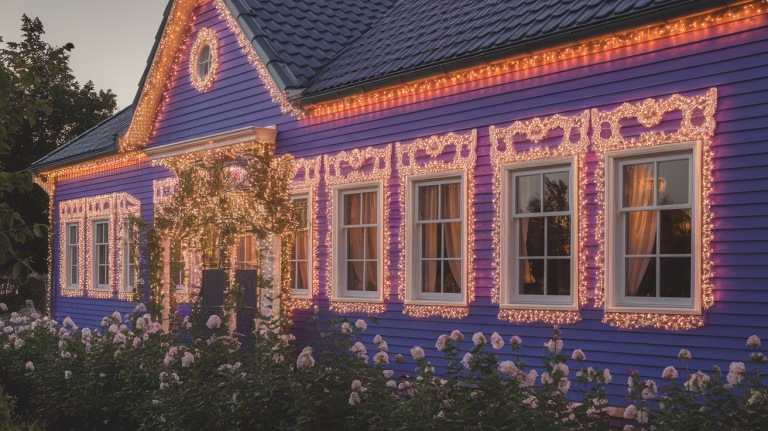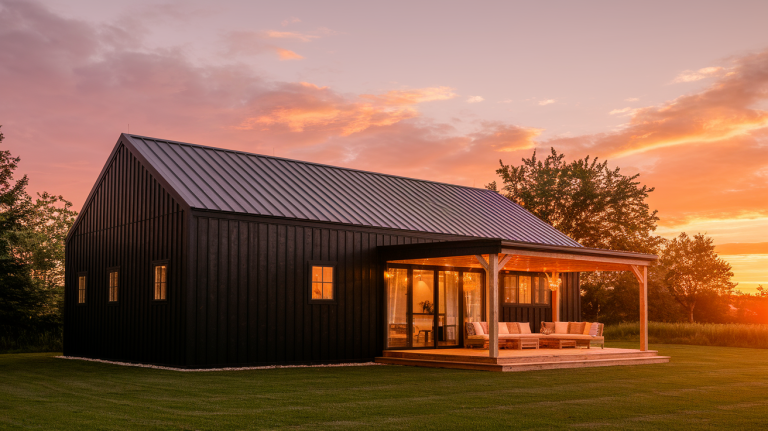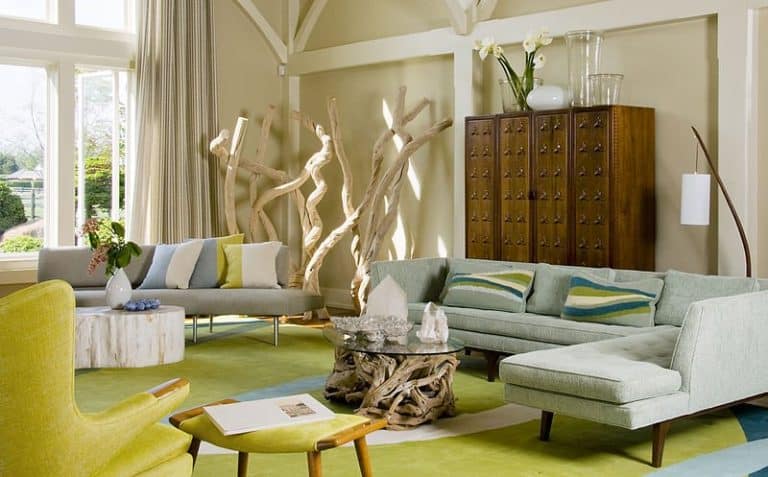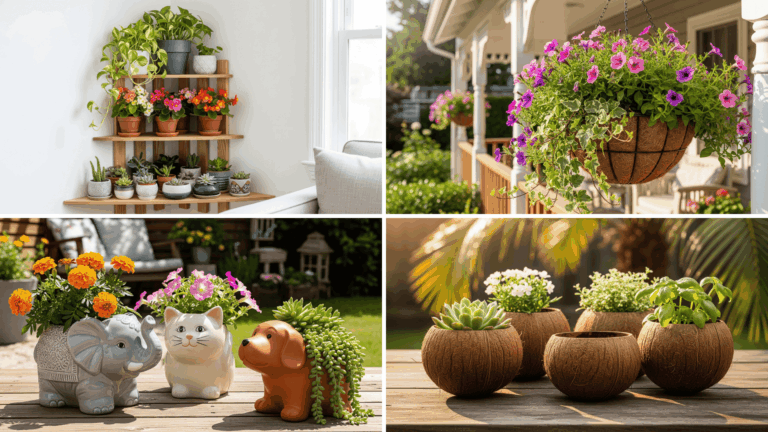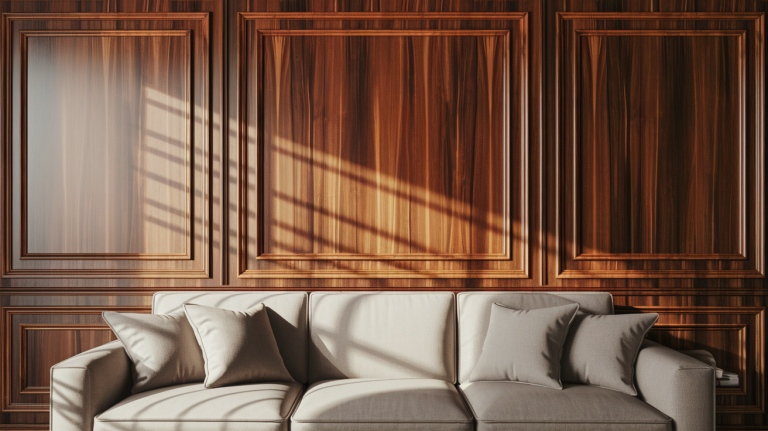17 Creative Japanese Bedroom Design Ideas
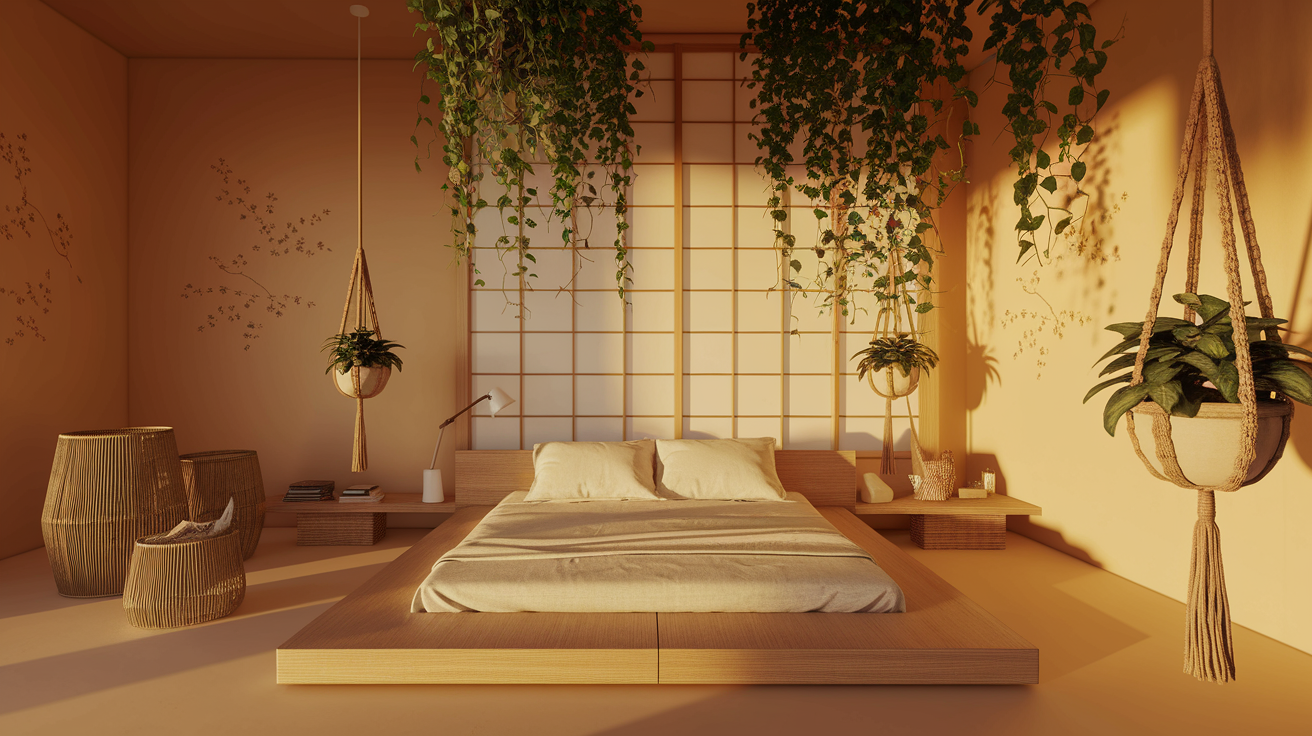
Japanese interior design is more than just a style. It’s a philosophy of living that converts bedrooms from mere sleeping spaces into sanctuaries of peace and minimalist beauty.
Rooted in principles of simplicity, natural harmony, and mindful living, these design approaches offer a peaceful environment among over-styled Western bedrooms.
If you’re seeking to create a peaceful retreat, maximize small spaces, and accept a more intentional way of living.
Here are some Japanese bedroom designs that provide creative solutions that blend functionality with deep calmness.
1. Futon
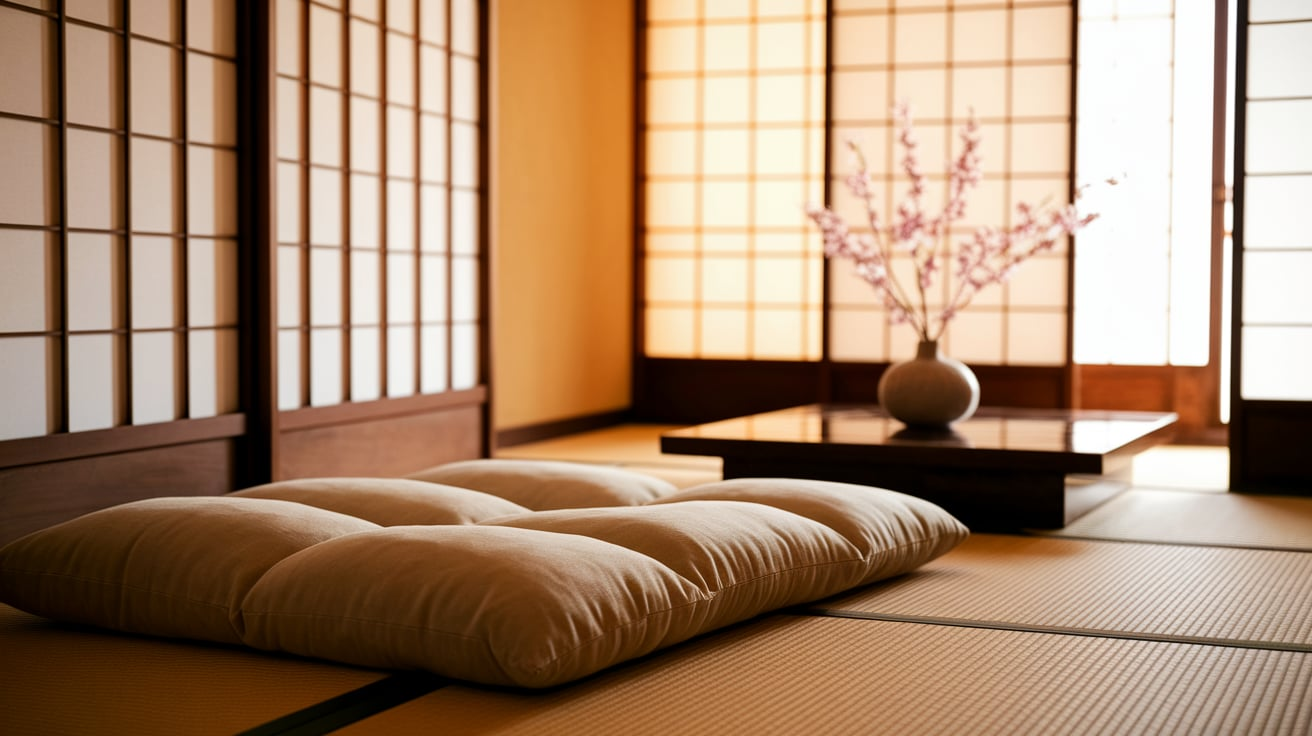
A low-profile bed frame crafted from simple wood or a traditional futon placed directly on tatami mats is a hallmark of Japanese interior design.
This arrangement not only creates a natural Japanese look but also gives the room a closer connection to the floor, promoting a sense of grounding and calm.
Futons can also be rolled up and stored during the day, making the room more versatile.
- Estimated cost: $150 – $800
- Tip: Simple futons or low wooden frames can be affordable; custom or high-end wood beds cost more.
2. Tatami Mats Flooring
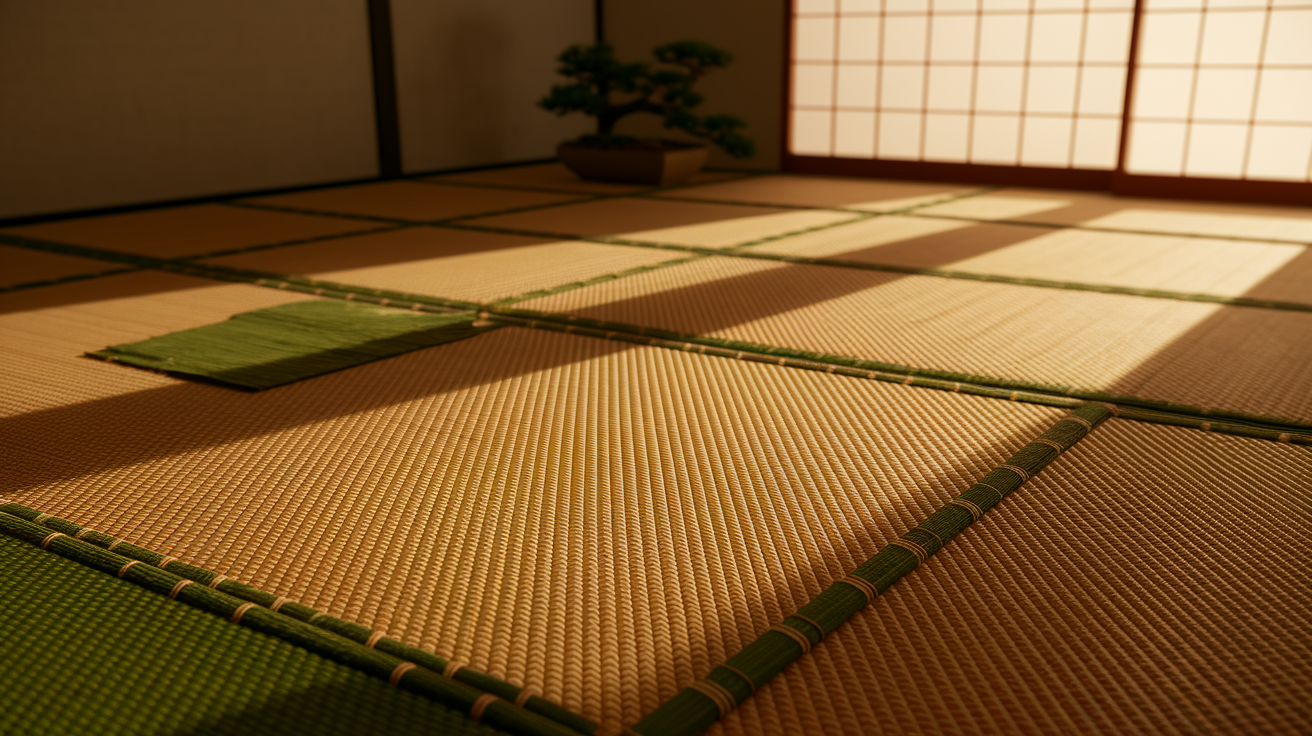
Tatami mats, traditionally made from rice straw, are an important feature of Japanese-style rooms.
They provide a soft, natural texture underfoot and have a mild, pleasant scent that uplifts the overall feel of the space.
Using tatami as the base layer of flooring instantly adds charm, creating a calm, warm feel that motivates barefoot relaxation.
- Estimated cost: $10 – $30 per sq. ft. installed
- Tip: Tatami mats are traditionally handmade; installation includes subfloor prep.
3. Shoji Sliding Doors
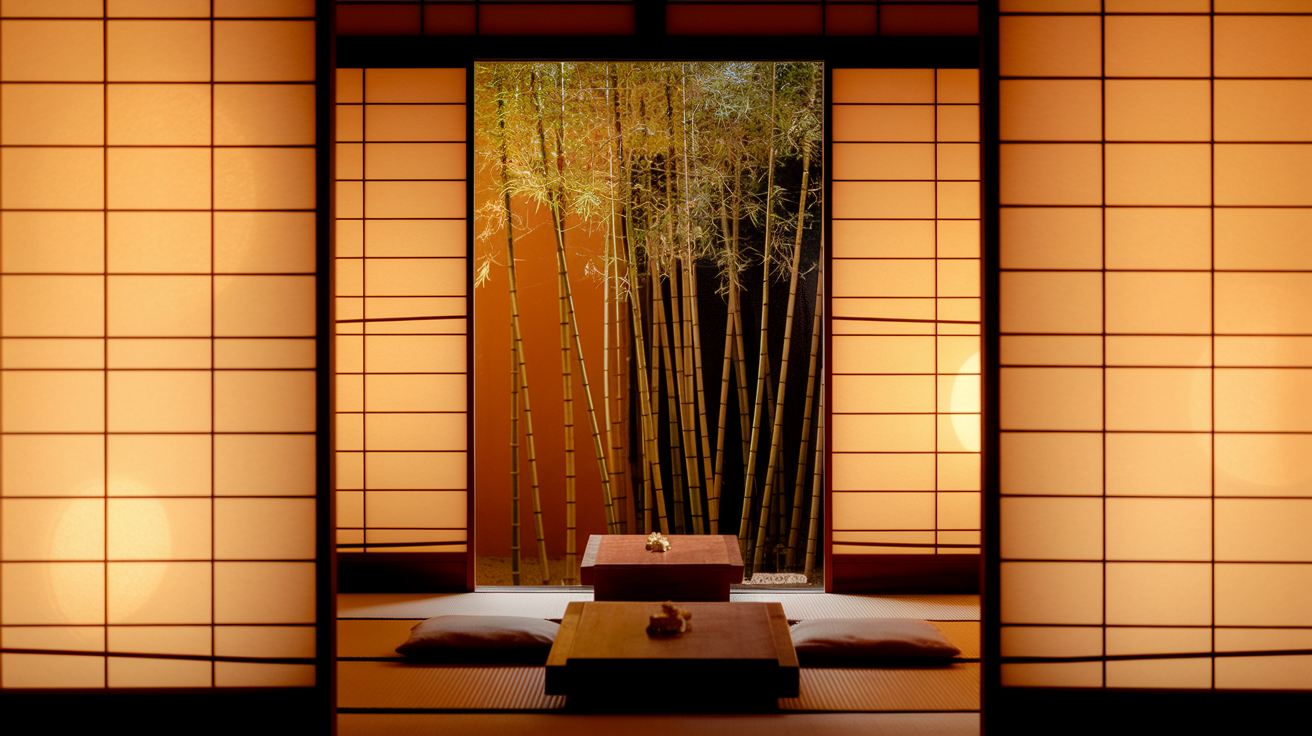
Shoji doors are a main Japanese design element, characterized by wooden frames covered with translucent paper.
These sliding panels allow natural light to filter through gently, casting a soft, warm glow throughout the room.
They help maintain a sense of privacy while preserving the light, airy feel that is essential to a calm, Japanese-inspired bedroom.
- Estimated cost: $300 – $1,200 per door installed
- Tip: Prefabricated kits are cheaper; custom wood and paper doors cost more.
4. Minimalist Layout
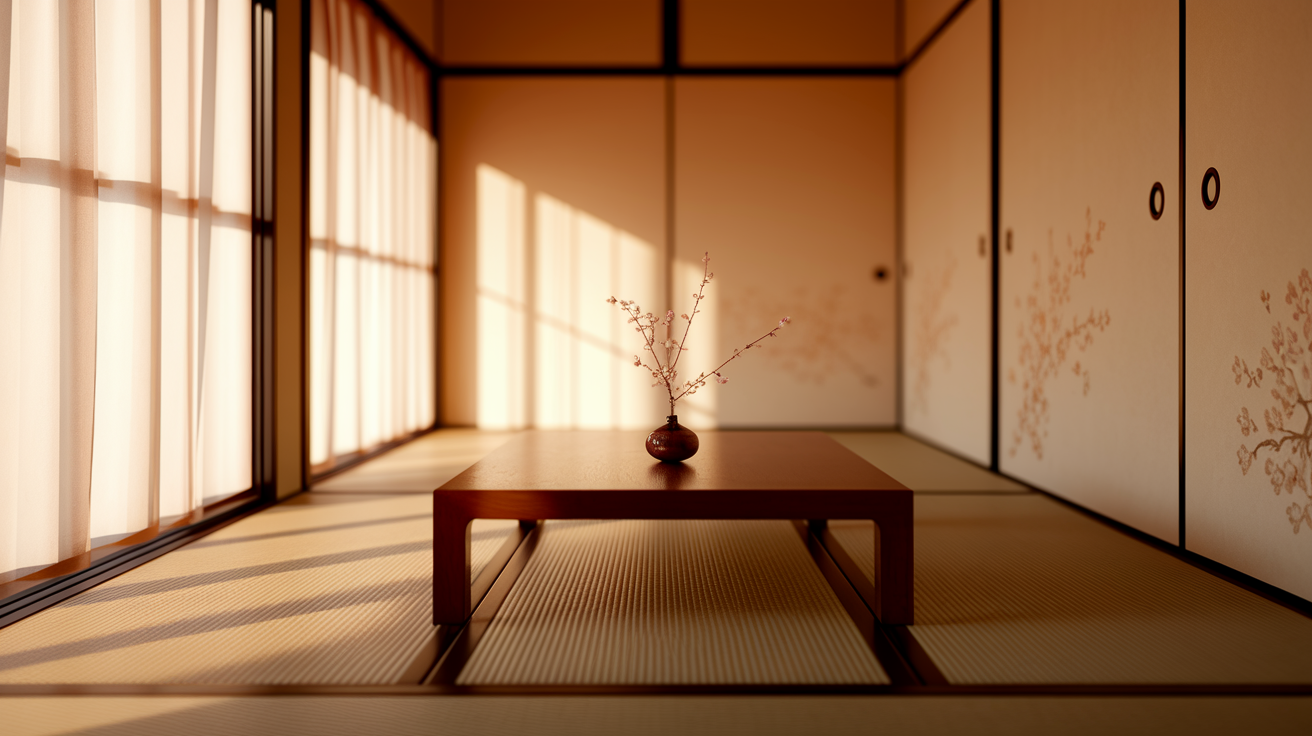
Japanese design is based on simplicity and mindfulness, and a minimalist layout is crucial to achieving this.
By using only essential furniture and decorations, you create a sense of spaciousness and calm. Each item should have a purpose or special meaning, reinforcing the idea that less is more.
This approach not only meets the visual appeal but also promotes a peaceful, meditative space.
- Estimated cost: $0 to $500 (varies)
- Tip: Minimalism reduces furniture costs; it mainly depends on what you buy.
5. Natural Wood Elements
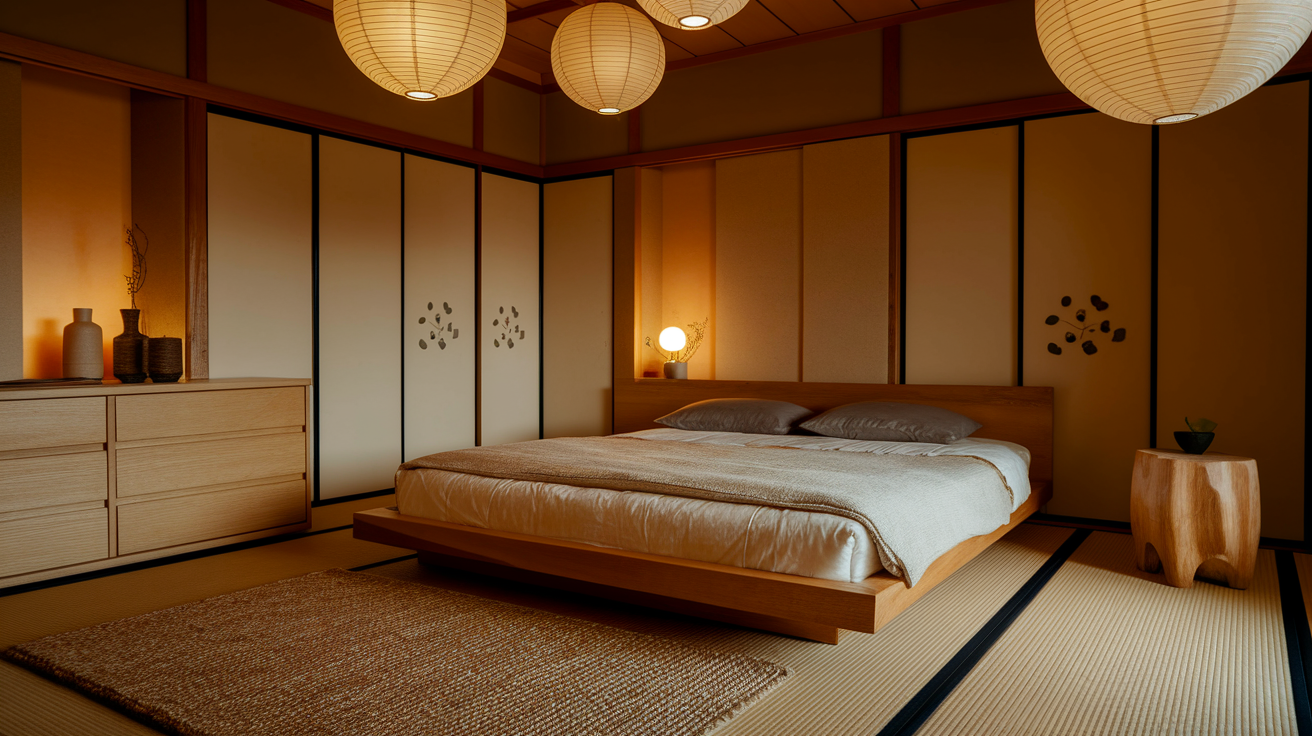
Furniture and accents made from natural wood or lightly stained finishes add warmth and organic charm to the room.
These elements connect the interior to the natural world, bringing in soothing tones and textures.
Wooden bed frames, side tables, or shelving units provide a sturdy yet gentle blending with the overall minimalist design.
- Estimated cost: $200 – $1,000+
- Tip: It depends on furniture pieces; handcrafted or solid wood is pricier.
6. Neutral and Earthy Color Palette
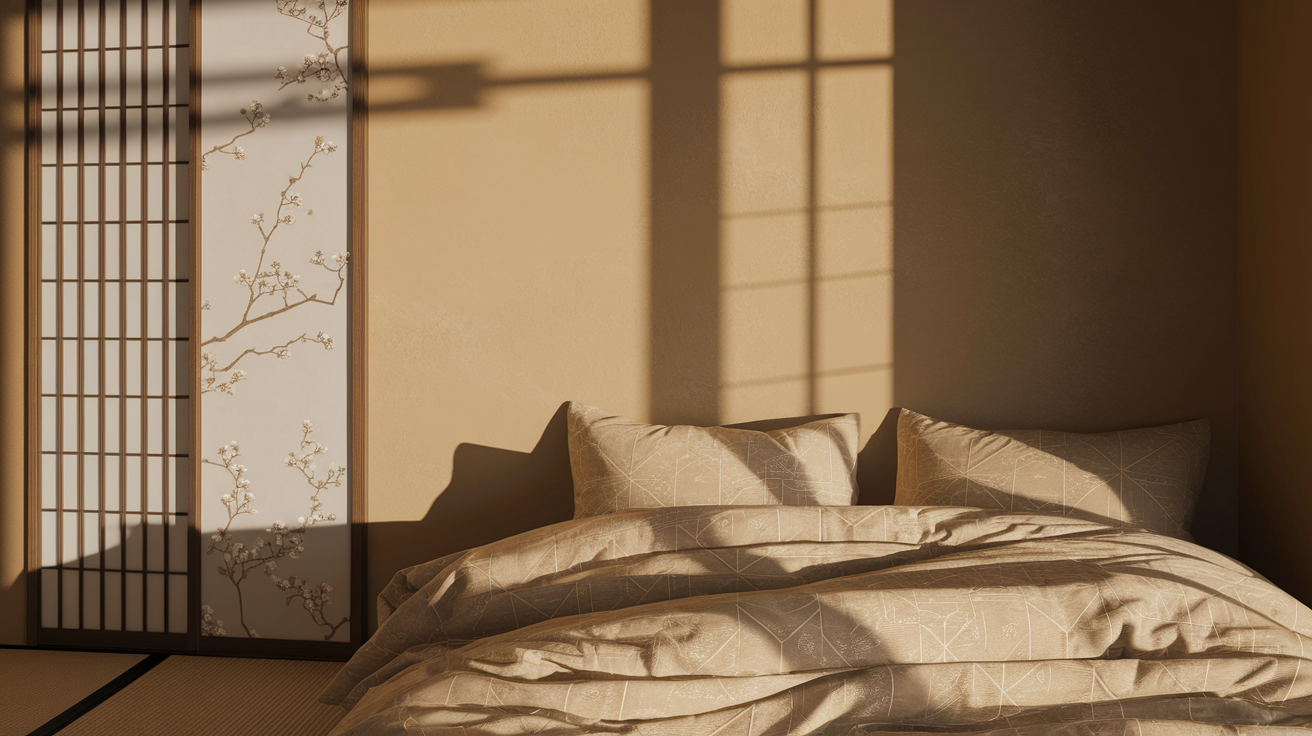
Whites, beiges, soft browns, and muted greens form the foundation of a Japanese-inspired bedroom’s color palette.
These neutral tones create a harmonious space that feels calm and balanced.
Using these earthy hues allows natural materials and textures to take center stage while subtle contrasts add depth.
- Estimated cost: $1 – $3 per sq. ft. (paint + labor)
- Tip: Wall prep and multiple coats are necessary.
7. Soft, Warm Lighting
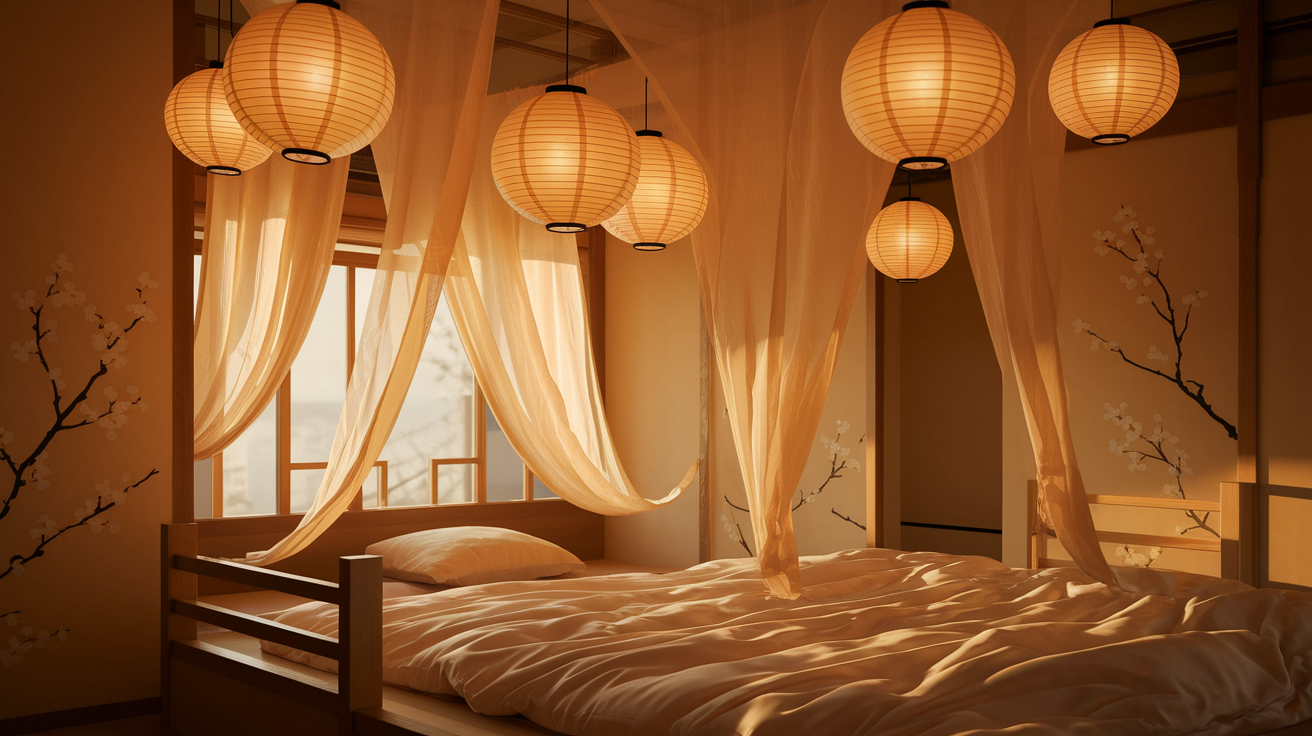
Lighting plays a critical role in setting the mood. Soft, diffused light sources such as paper lanterns, rice paper lamps, or LED fixtures hidden behind panels create a warm, inviting glow.
This gentle illumination helps to uplift relaxation and makes the space feel intimate and cozy, ideal for unwinding at the end of the day.
- Estimated cost: $30 – $200 per fixture
- Tip: Simple paper lanterns are inexpensive, while designer lamps tend to be more expensive.
8. Incorporate Nature Motifs
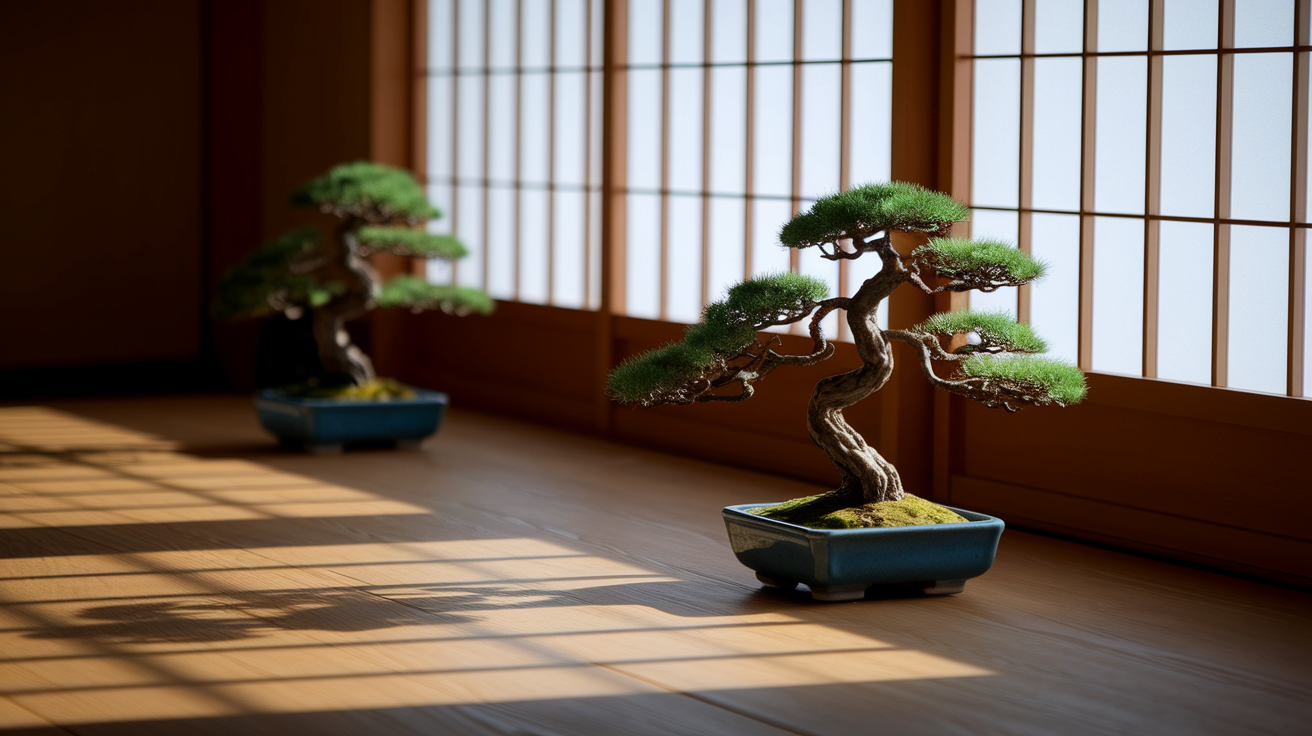
Bring the outdoors inside by adding small bonsai trees, bamboo stalks, or indoor rock gardens. These natural accents introduce a sense of peace and organic beauty, connecting the room to nature.
The presence of greenery and natural elements can also improve air quality and provide a refreshing, peaceful feel.
- Estimated cost: $20 – $300+
- Tip: Small plants are generally more affordable; larger bonsai or indoor gardens tend to cost more.
9. Textured Wall Art and Calligraphy
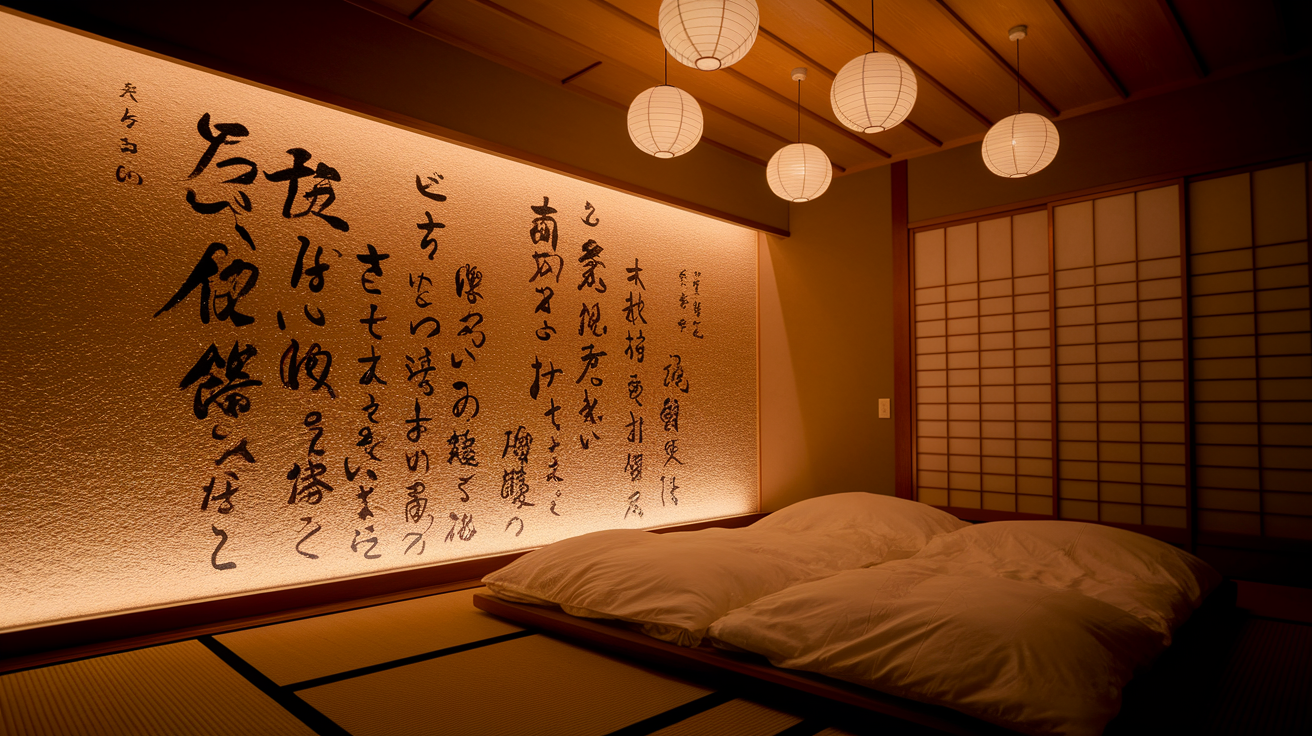
Traditional Japanese scrolls with calligraphy or art pieces depicting natural scenes add cultural depth and subtle decoration.
These pieces are understated yet meaningful. They blend effortlessly into the room’s minimalist design while providing visual and artistic interest.
- Estimated cost: $50 – $500+
- Tip: Prints and scrolls vary widely; original art is more expensive.
10. Multi-Functional Spaces
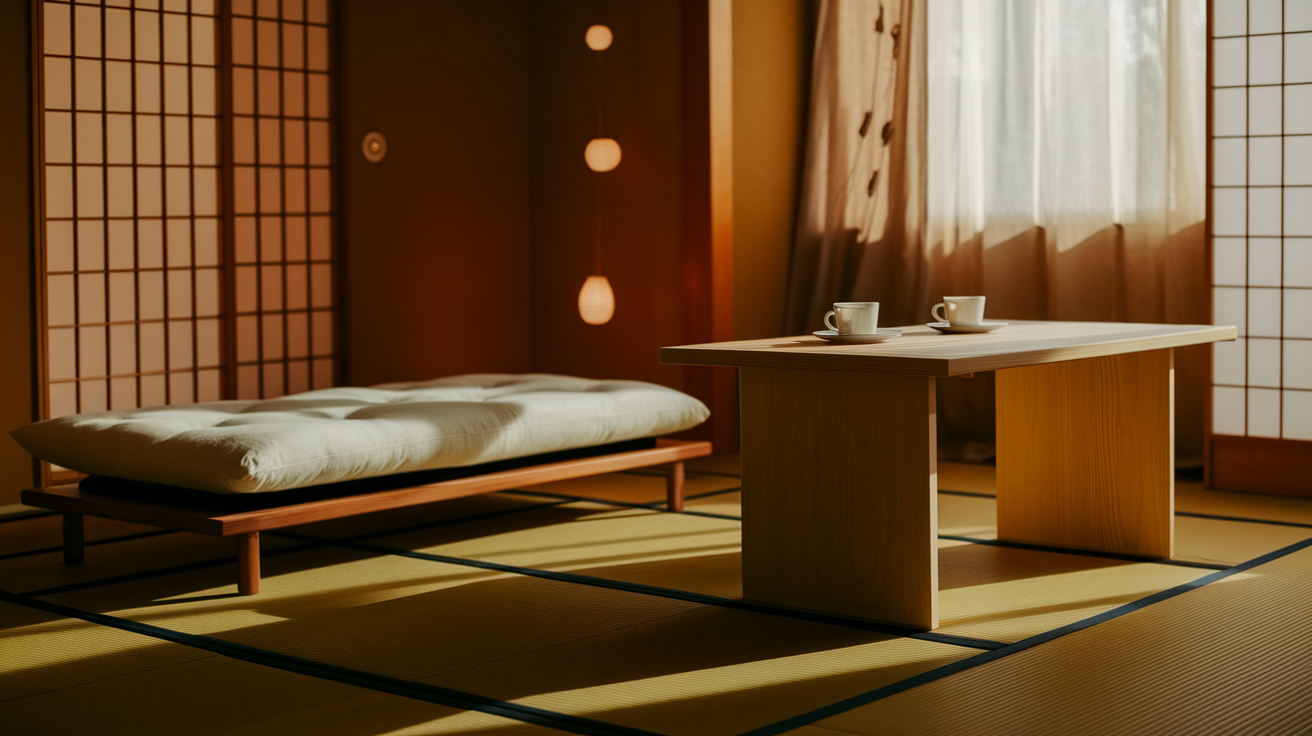
By using foldable furniture, cushions, or compact seating, you can easily switch the room from a sleeping area to a meditation space, reading nook, or even a light exercise area.
This flexibility aligns with the minimalist style and makes the most of available space without adding clutter.
- Estimated cost: $50 – $500
- Tip: Most things depend on the type and quality of the furniture.
11. Layered Textures
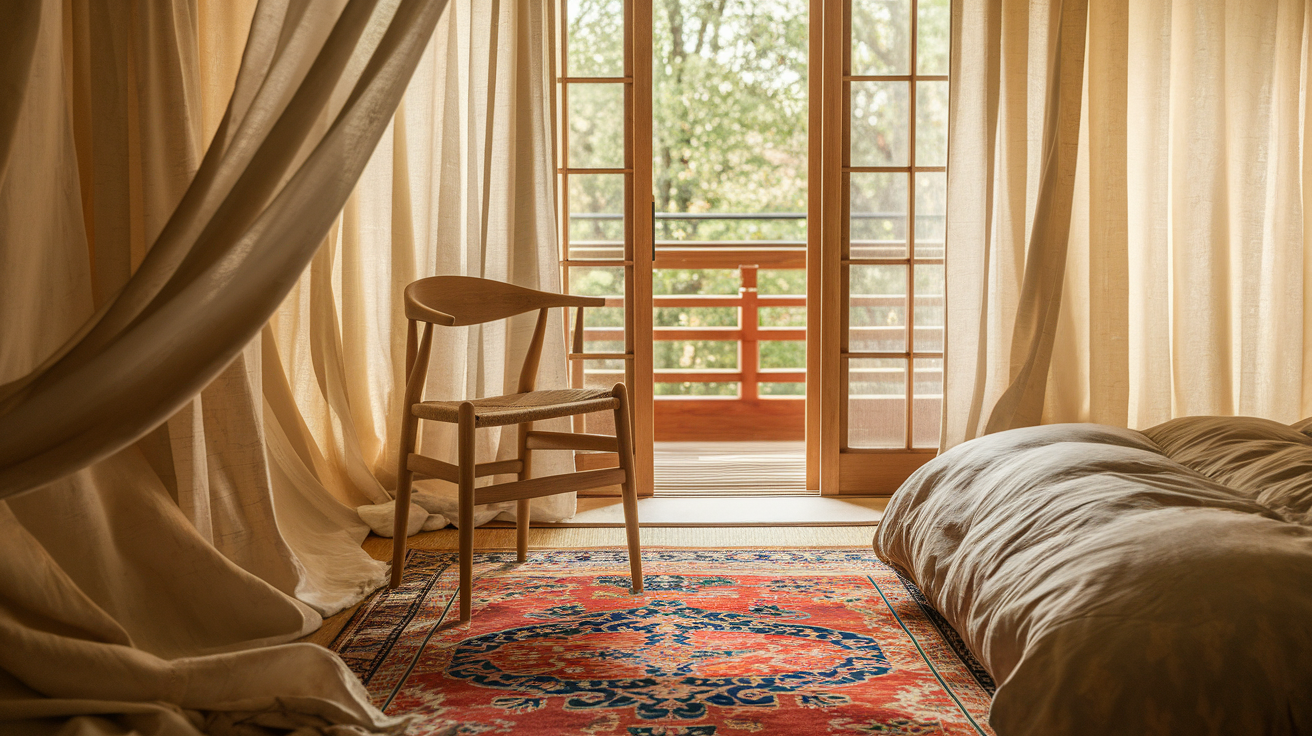
Incorporate a mix of textures to create a visually engaging yet simple space. Soft linens for bedding, woven throws draped over chairs, and natural fiber rugs on the floor add tactile variety.
These layers make the room more inviting and comfortable without detracting from the clean, uncluttered space.
- Estimated cost: $100 – $600
- Tip: Natural fiber rugs and quality linens add to the cost.
12. Rustic and Handcrafted Accents
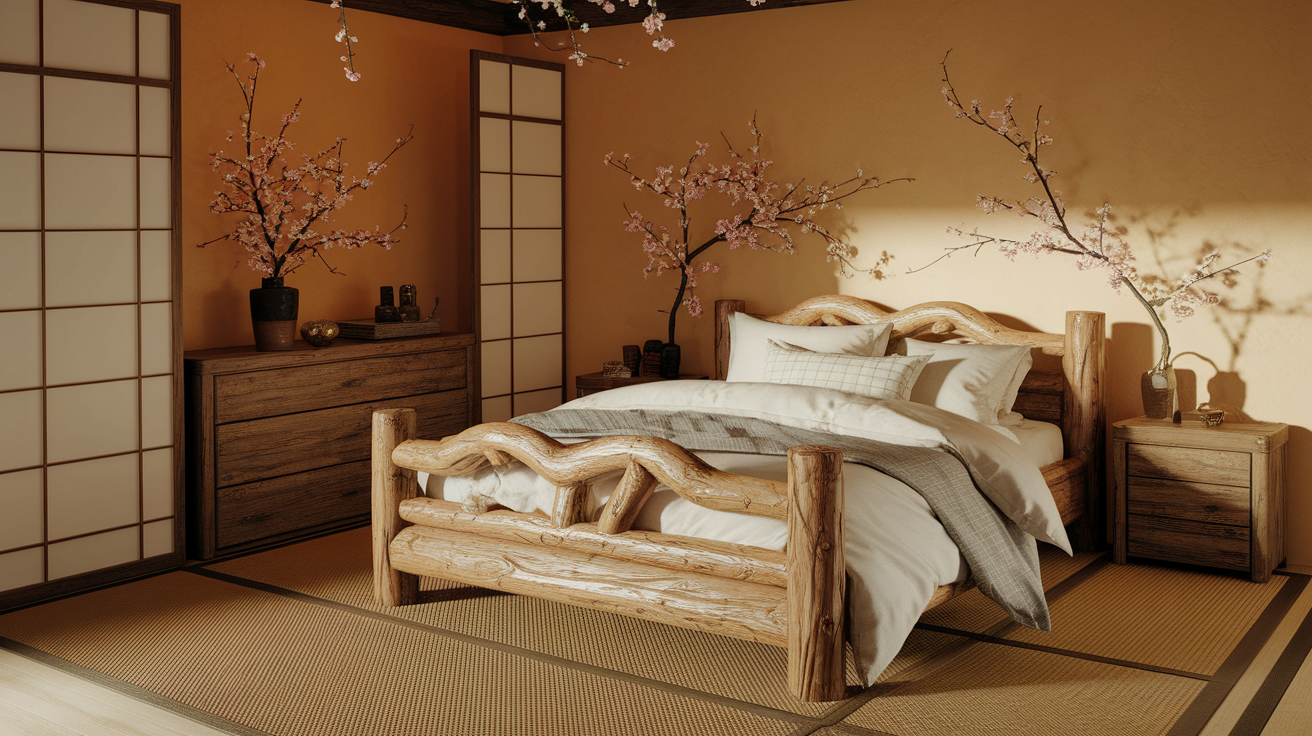
Handcrafted items such as wooden stools, ceramic vases, or woven baskets bring a touch of traditional craftsmanship into the space.
These small details add character and a traditional feel, grounding the room in the warmth of human artistry.
They also support the idea of choosing quality over quantity, highlighting the Japanese approach to mindful living.
- Estimated cost: $30 – $300
- Tip: Handmade items vary in quality; imported or artisan pieces tend to be more expensive.
13. Maximize Natural Light
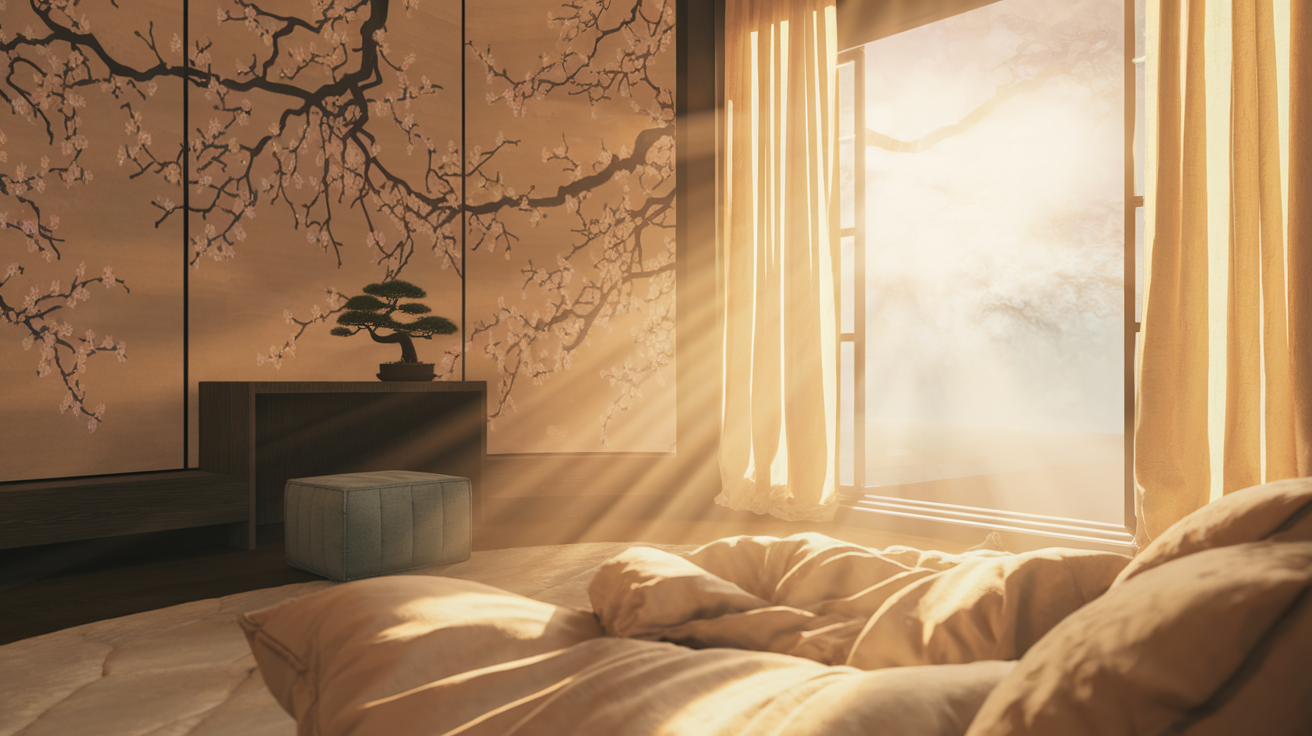
Natural light is a key element in Japanese-inspired interiors. Keep windows unobstructed or use sheer curtains to flood the room with sunlight.
This approach highlights the natural textures and materials, promoting the feeling of openness, and helps create a soothing, bright space during the day.
- Estimated cost: $50 – $300 per window
- Tip: Simple sheer curtains are more affordable; custom treatments tend to cost more.
14. Quiet, Peaceful Sounds
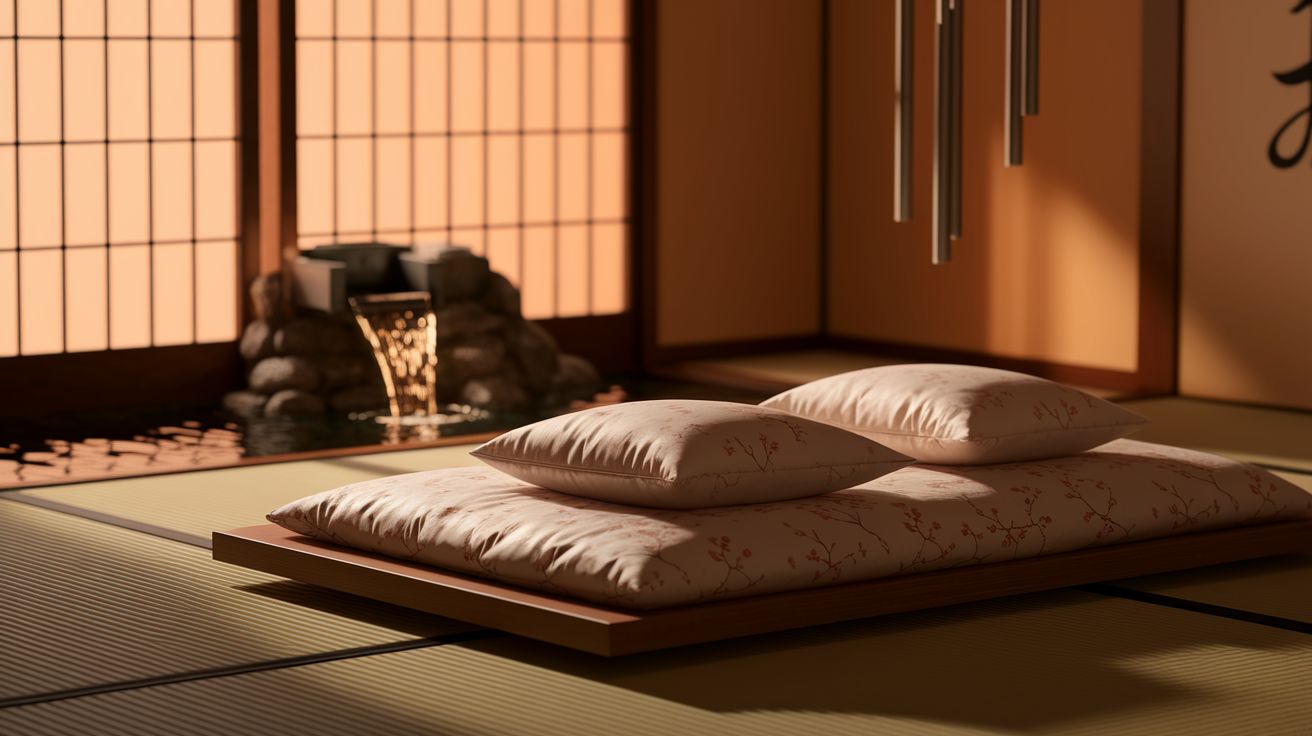
Add soothing sounds into your bedroom, such as a gentle water fountain, wind chimes, or calming background music.
These sounds can help create a serene environment, uplifting relaxation, and mindfulness.
- Estimated cost: $20 – $200
- Tip: Small water fountains and wind chimes are affordable options; high-end sound systems, on the other hand, tend to be more expensive.
15. Open Shelving and Floating Storage
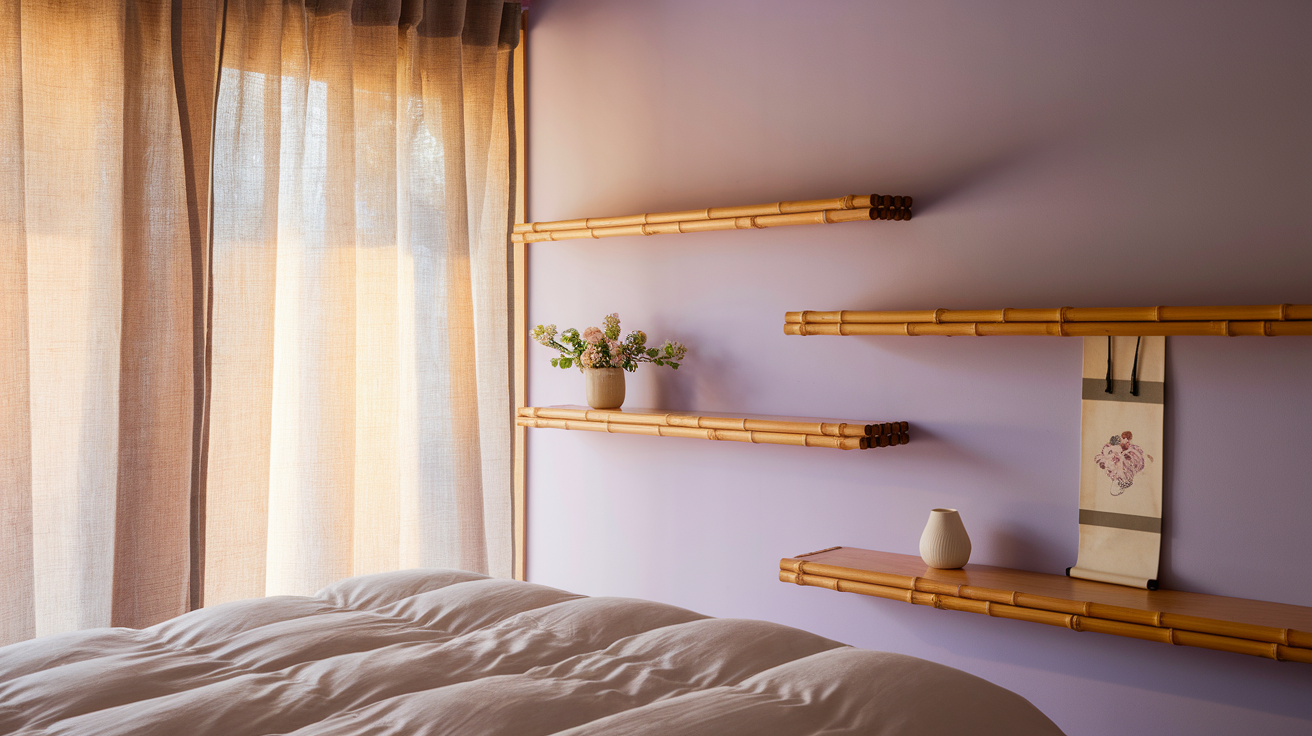
Instead of bulky cabinets or dressers, opt for minimalist, open shelving or floating storage. This approach keeps the room light and airy while offering easy access to your essentials.
- Estimated cost: $50 – $500
- Tip: Floating shelves can be affordable, while custom shelves tend to cost more.
16. Floor Cushions and Low Seating
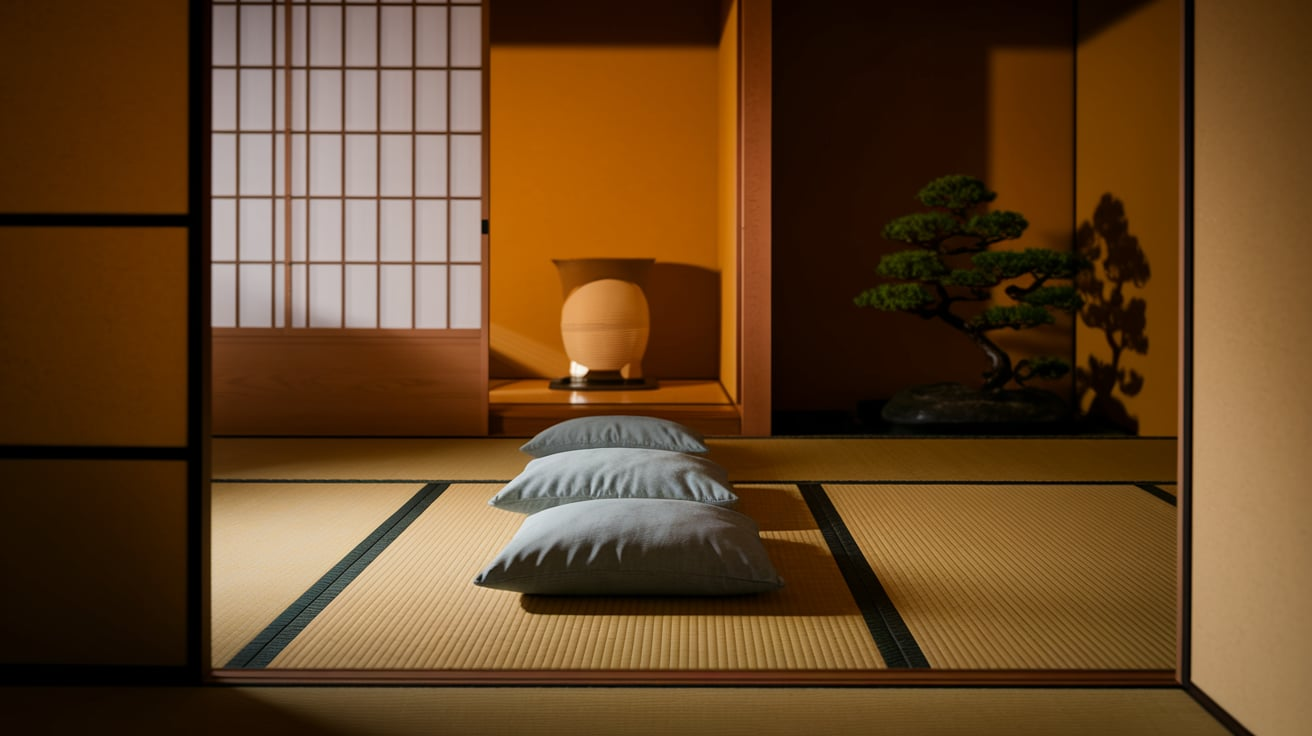
Traditional Japanese seating often involves low cushions or floor chairs, providing a relaxed and comfortable way to sit.
These pieces are great for meditation, reading, or simply enjoying your space.
- Estimated cost: $30 – $150
- Tip: Floor cushions and low seating options can be found at various price points, depending on the quality and material.
17. Zen Garden or Sand Tray
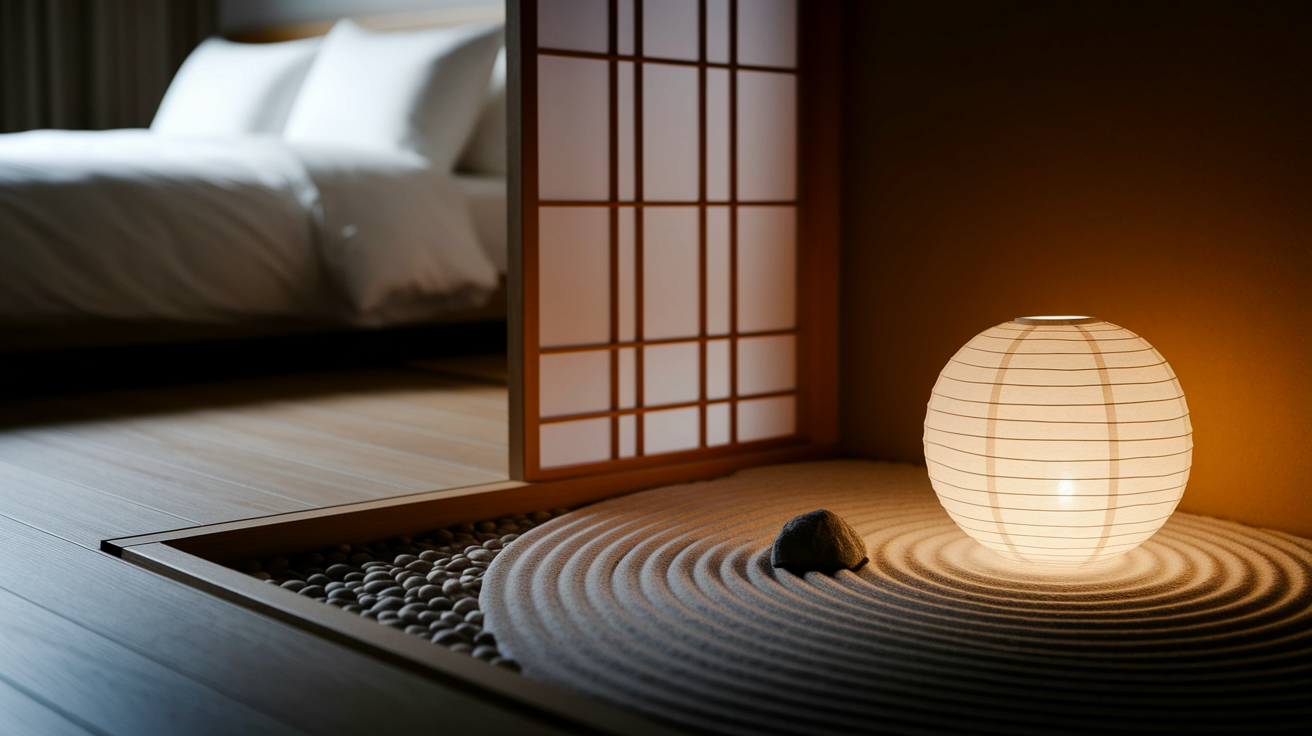
Introduce a small Zen garden or sand tray into your bedroom as a mindful decorative piece.
These calming elements help promote peace and meditation while adding a unique visual interest to your room.
- Estimated cost: $20 – $150
- Tip: Small Zen gardens are more affordable; larger, custom pieces tend to cost more.
Final Thoughts
Japanese bedroom design isn’t about creating a perfect showroom; it’s about crafting a space that feels the best for you.
Start small: declutter a corner, introduce a natural element, or add a minimalist color palette.
Your bedroom can become a personal sanctuary that shows calm and intention, even if you have limited space or resources.
Remember, the heart of Japanese design is mindfulness.
It’s less about how your room looks and more about how it makes you feel. Your way to a more peaceful bedroom starts with a single, thoughtful step.

